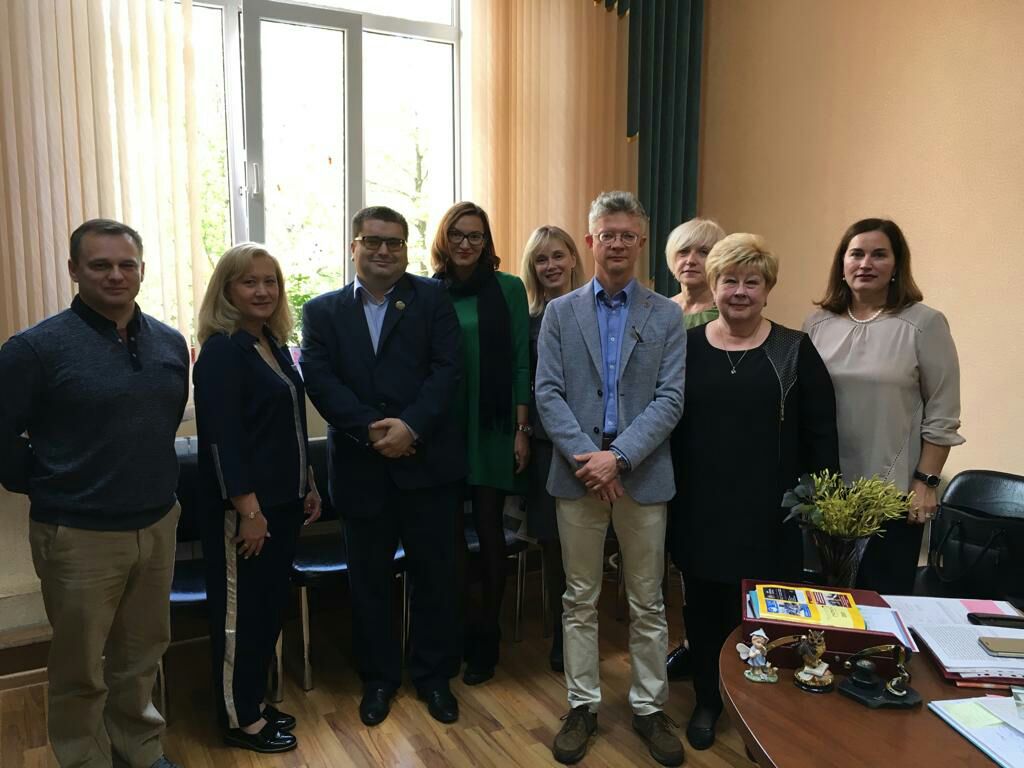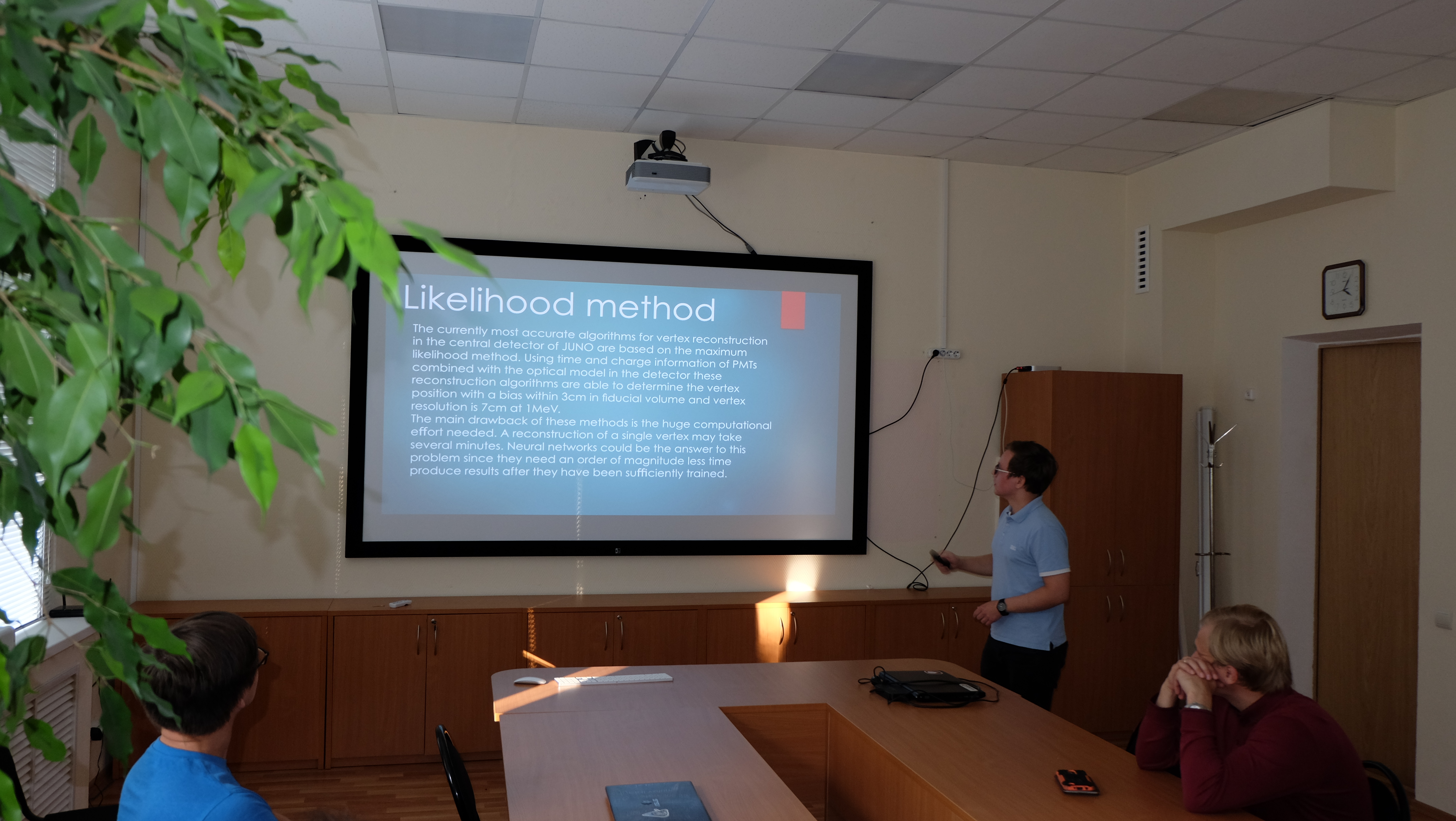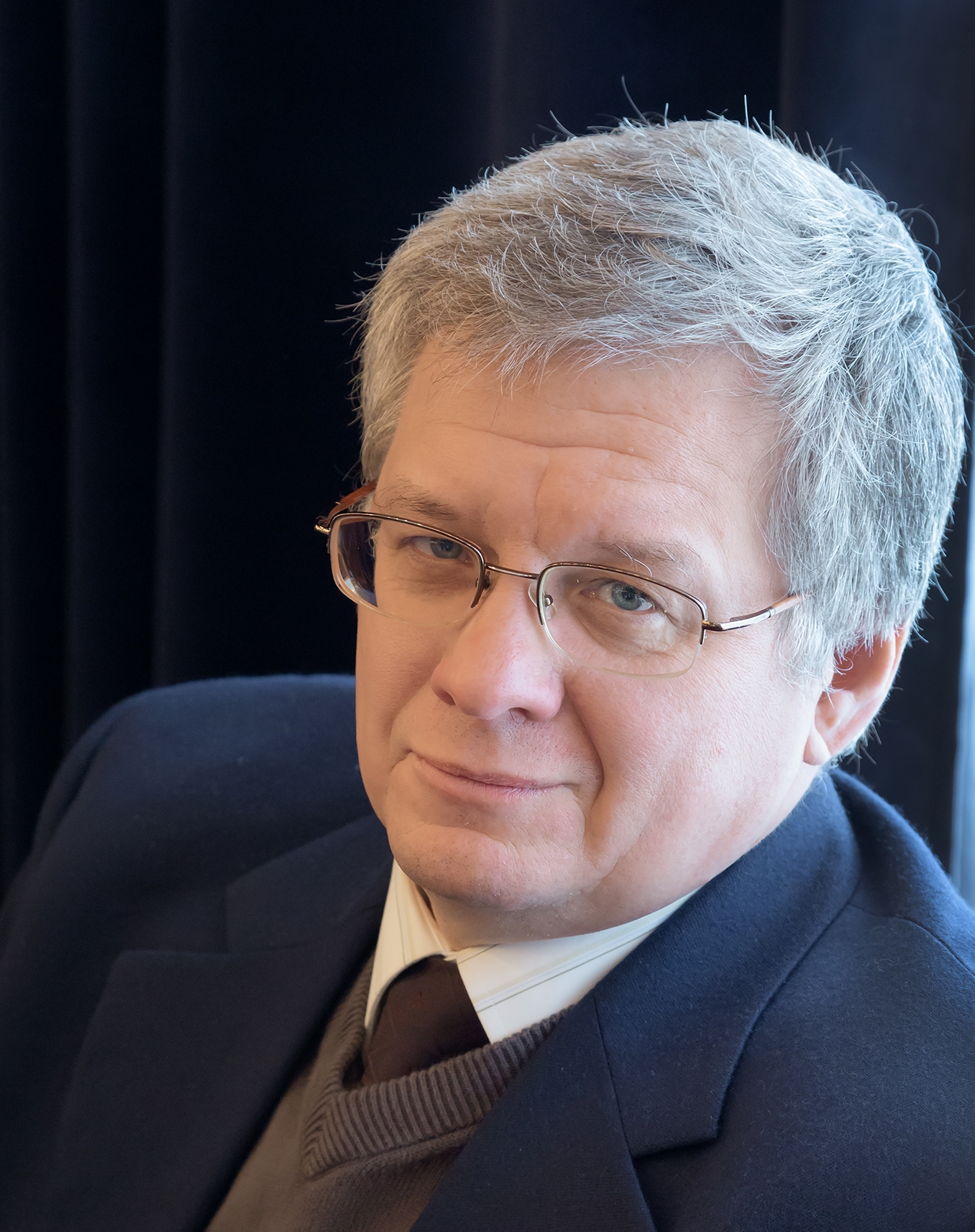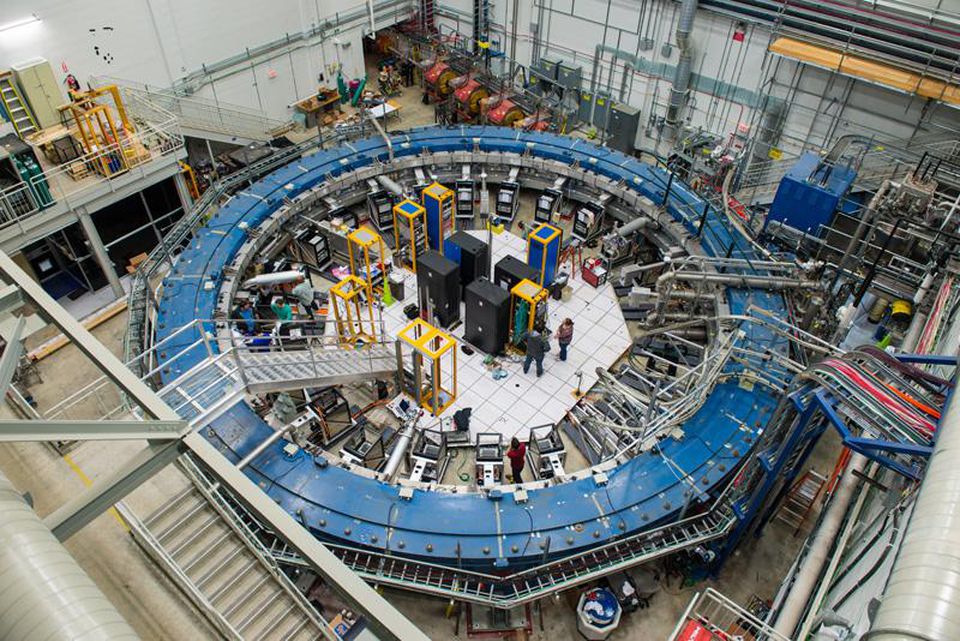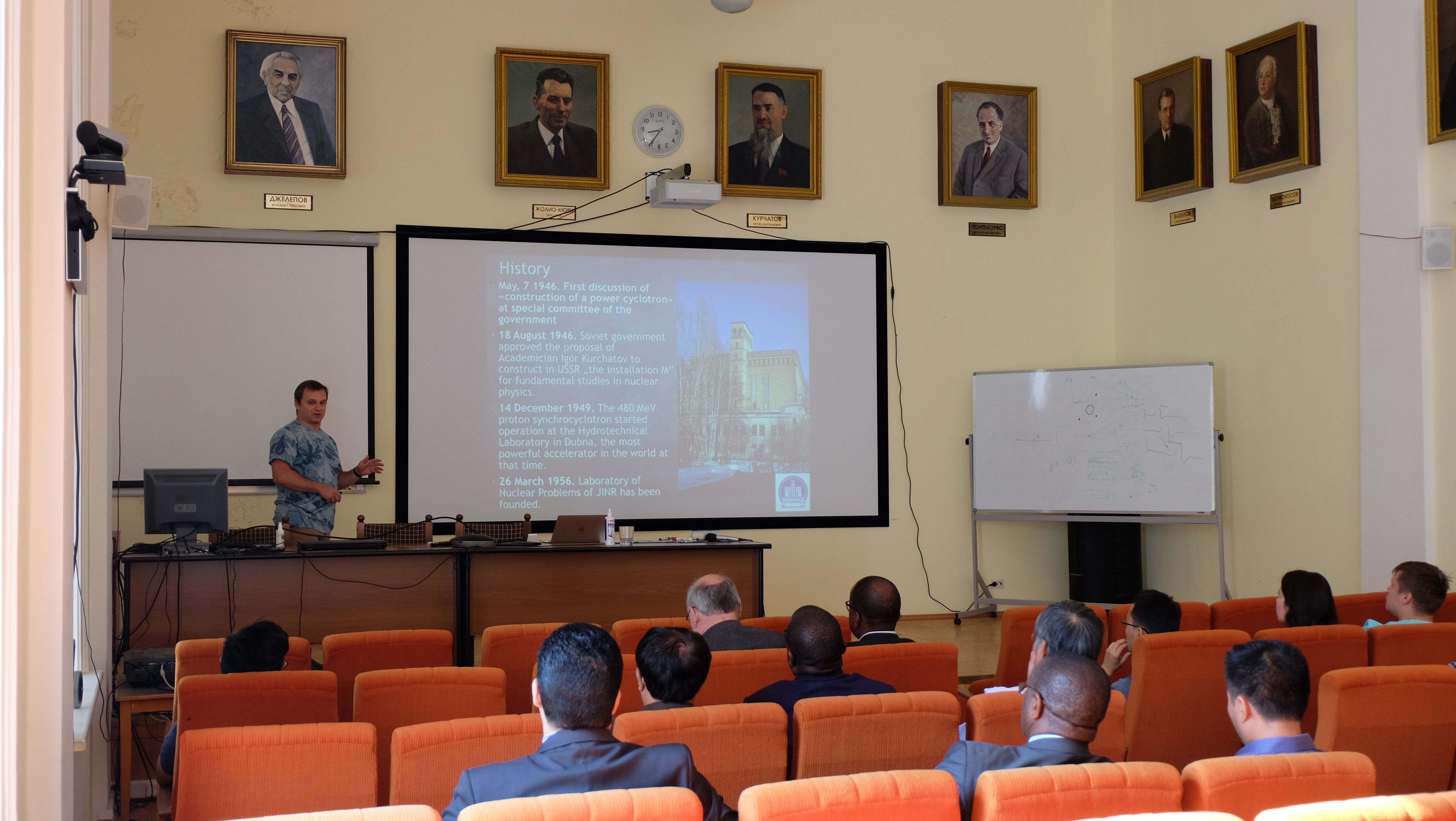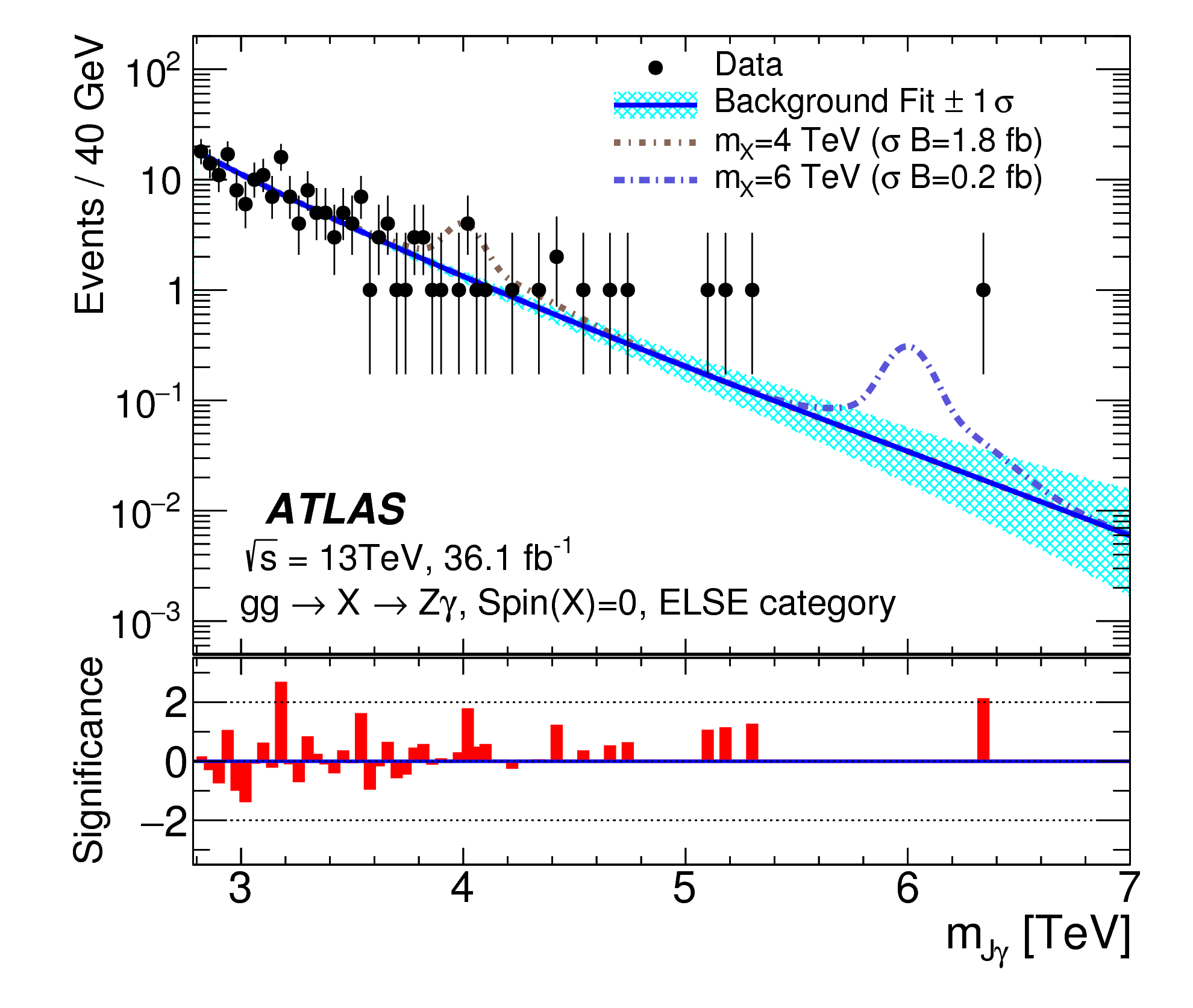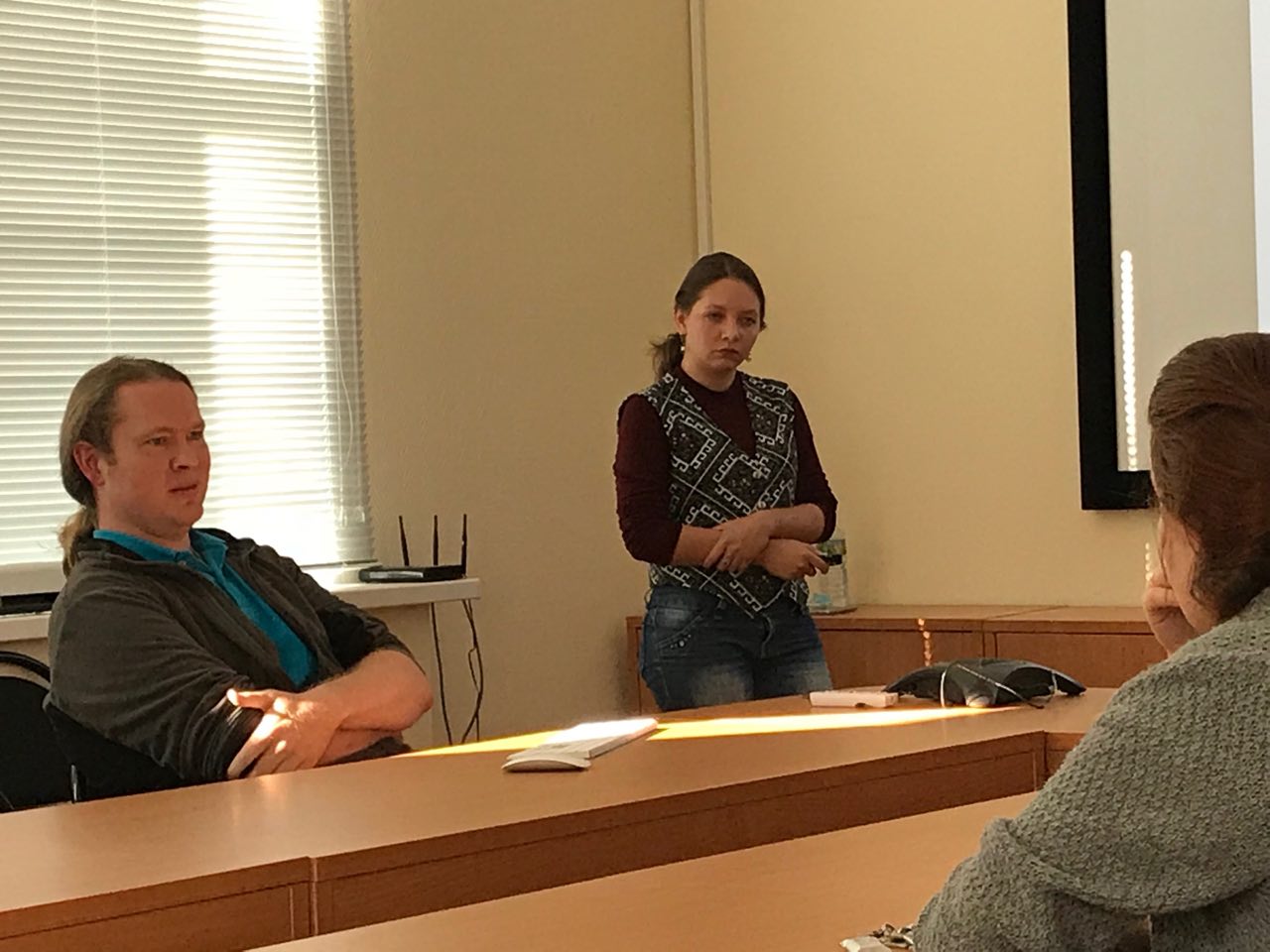News
24.09.2018
On 20–24 September 2018, the first visit of the JINR delegation to Kamchatka took place. D.V. Naumov and I.P. Ivanov (DLNP, JINR) negotiated establishment of scientific and education cooperation with the Kamchatka Krai.
The first practical step could be a new Kamchatka School on Particle Physics and Astrophysics in the autumn 2019, an analogue to the Baikal School that proved to be utterly successful.
In the Kamchatka State University named after Vitus Bering and in the children’s physico-mathematical school the guests from JINR gave talks on the JINR research and education programmes, Baikal Neutrino Telescope, and discovery of gravitational waves.
21.09.2018
Another seminar was held within the JINR Summer Student Programme today. Dmitry Selivanov (St. Petersburg State University, supervisors Konstantin Treskov and Maksim Gonchar) spoke about the reconstruction of the primary interaction vertex in the JUNO central detector using neural networks. Two methods for solution of this problem are proposed, one using a convolutional neural network and the other using a direct-propagation neural network.
21.09.2018
Professor V.A. Bednyakov was re-elected as DLNP Director for the second term at the 124th session of the JINR Scientific Council on 20 September 2018. We congratulate Vadim Aleksandrovich on being elected to holding the position of highest authority at our laboratory and wish him good health and creative achievements!
20.09.2018
Mikhail Vasil’evich Lyablin speaks about his general laboratory seminar “Effect of a decrease in the time for restoration of the liquid surface horizontality in the Precision Laser Inclinometer”.
19.09.2018
It turns out that the American business magazine Forbeswrites not only about billionaires but also, for example, about the Muon g-2 experiment, in which our scientists also take part.
19.09.2018
Aleksei Vyacheslavovich Gus’kov speaks about the search for photoproduction of the charmonium-like state X(3872) in the COMPASS experiment and an indication of a new state X ̃ (3872).See the full version of the seminar here.
12.09.2018
Vladimir Sergeevich Kurbatov speaks about his general laboratory seminar held at DLNP, where he reported the results of measuring differential cross sections for the reaction pp → {pp}sπ0, where {pp}s is the 1S0 state of two protons (diproton) with the excitation energy Epp<3 MeV. The measurements were performed at the ANKE facility of the COSY accelerator (Jülich, Germany) at 12 proton beam energies in the interval of 0.8 to 2.8 GeV. The angular range of the diproton in the centre-of-mass system was 0◦ < θpp ≤? 18◦, where θpp is the diproton angle.
07.09.2018
The last day of the international training for scientific administrative personnel “JINR Experience for Member States and Partner Countries” began with a talk of D.V. Naumov about our laboratory at the DLNP conference hall. Among the training participants were officials and specialists from government offices and educational and scientific organizations of Bulgaria, Vietnam, Egypt, Italy, South Africa, and Botswana. During the training, they visited all seven JINR laboratories.
06.09.2018
Dmitry Kostyunin (Karlsruher Institut für Technologie (KIT), Germany) speaks about his general laboratory seminar at DLNP, where he reported the latest neutrino and cosmic ray physics news. See the full version of the seminar here.
03.09.2018
Recently the ATLAS collaboration has published the results of searching for new resonances in the decay channel into a Z, W, or Higgs boson and a photon. The Z, W, and Higgs bosons were reconstructed in the hadron decay channel. The search for the resonances was performed using the data on the proton–proton interactions at the cms energy of 13 TeV corresponding to 36.1 fb-1, which were collected during the operation of the ATLAS detector at the LHC over the period of 2016–2017.
24.08.2018
Another accounting seminar was held within the framework of the JINR Summer Student Programme. It was given by Bruna de Oliveira Stahlhöfer from the Federal University of Santa Catarina, Brazil. Her training ended with the report "Investigation of Deep Learning methods for the classification of events in the NOvA experiment", which she delivered at the DLNP Elementary Particle Physics Department last Thursday (supervisors Christopher Kullenberg and Oleg Samoilov).
20.08.2018
A traditional understanding of Latin phrases is not always quite correct. An example is the phrase “mens sana in corpore sano” considered to mean “a sound mind in a sound body”. Taken from Juvenal’s satire, it turns out to be quoted out of context and in no way means that the one who maintains bodily health thus maintains one’s mental health.


